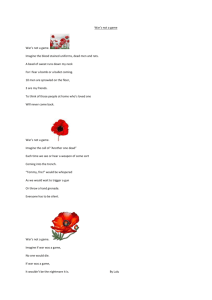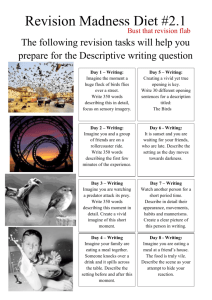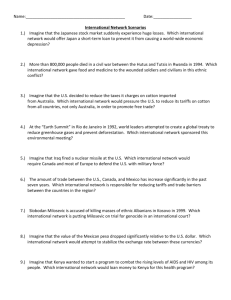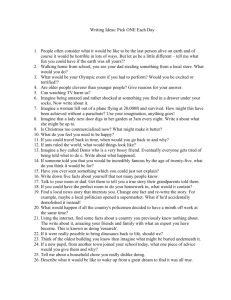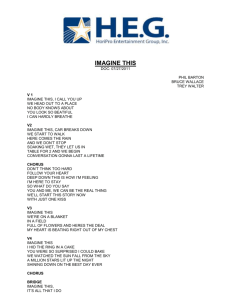428 culture jams
advertisement
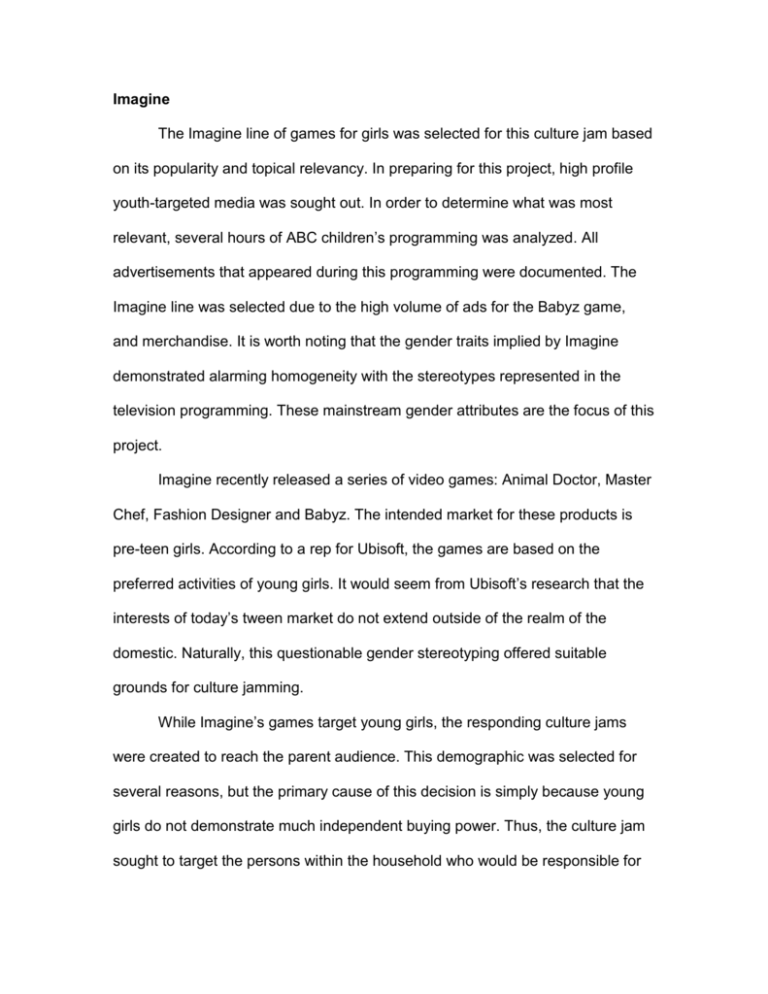
Imagine The Imagine line of games for girls was selected for this culture jam based on its popularity and topical relevancy. In preparing for this project, high profile youth-targeted media was sought out. In order to determine what was most relevant, several hours of ABC children’s programming was analyzed. All advertisements that appeared during this programming were documented. The Imagine line was selected due to the high volume of ads for the Babyz game, and merchandise. It is worth noting that the gender traits implied by Imagine demonstrated alarming homogeneity with the stereotypes represented in the television programming. These mainstream gender attributes are the focus of this project. Imagine recently released a series of video games: Animal Doctor, Master Chef, Fashion Designer and Babyz. The intended market for these products is pre-teen girls. According to a rep for Ubisoft, the games are based on the preferred activities of young girls. It would seem from Ubisoft’s research that the interests of today’s tween market do not extend outside of the realm of the domestic. Naturally, this questionable gender stereotyping offered suitable grounds for culture jamming. While Imagine’s games target young girls, the responding culture jams were created to reach the parent audience. This demographic was selected for several reasons, but the primary cause of this decision is simply because young girls do not demonstrate much independent buying power. Thus, the culture jam sought to target the persons within the household who would be responsible for introducing the game into the family home. The messages created for the parents were two-fold. Obviously, the primary focus of the messaging focused on the aforementioned gender role. As an additional focus, the role of mass media as a babysitter, or second-string parent, is implied. Within the copy for the four ads, Imagine identifies with the parent burdened by a fast-paced lifestyle that prevents her from making a meaningful connection with her daughter. The two slogans chosen for the campaign, “Imagine: so you don’t have to”, and “Imagine: we’ll show you how” suggest the role of the gaming company as a parenting facilitator. This implication is fitting for the way that Imagine attempts to define the priorities of young girls. It is the intention of these jams, however, that this intended relationship is seen as unnatural and unhealthy. Although the culture jams were created to speak to the parent demographic, their designs were created to have residual appeal to pre-teen girls as well. Through the use of thought-provoking images and unsettling copy, it is the hope of these designs to cause young girls to ask questions about the gender roles they unconsciously accept. In attempt to maintain this secondary audience, the copy generated for this campaign was written in fairly simplistic text, with emphasis on not appearing too outlandish. While some culture jams may benefit from very outlandish text, this project relies on subtlety to create discomfort in both the younger and older audiences. To promote their series, Imagine has created desktop wallpaper images. In creating the culture jams, these wallpaper pictures were used as the bases. Following the acquisition of the Imagine images, suitable counter images were obtained through Veer. The intended aesthetic of the secondary images was high quality and professional. As the target audience for this project is not expected to be overly open to the alternative opinions offered by culture jamming, it was crucial to create high quality texts. By creating a professional looking image, it is hoped that the audience will spend more time regarding the project rather than rejecting it outright. Similarly, the copy written for this project- as previously mentioned- is neither too exuberant nor too sarcastic. This was a conscious effort to avoid creating feelings of hostility and/or alienation within the target audience. The inspiration for each image was based on the original wallpaper designs offered by Imagine. In two of the four images, the original models were completely removed and replaced with pictures of unhappy children. In the remaining two, the original models were juxtaposed with contrasting images. The original colour palette from Imagine was used to maintain visual continuity and brand recognition. Beginning with the first ad created, for Animal Doctor, the copy provided is slightly unsettling. With each ad, the criticism of Imagine’s agenda to instill gender appropriate priorities in young girls becomes apparent. This message comes to fruition in the Babyz ad, which concludes with a statement that boasts Imagine’s ability to prepare the user for Women’s Work through Girls’ Games. The intended mounting effect of this argument is based on the concept of these images appearing in sequence. These images were created with the intention of being “jammed” into parenting magazines (along the bottom half of glossy colour pages), the back of Imagine product packaging in retail settings, and formatted into a web-based pop-up ad. In order to heighten the feeling of discomfort experienced by the viewer, these images were designed with the dimensions of 8.5 by 7 inches. Before printing, their height was resized by 2 inches. The resulting image looks ill fit, creating visual discomfort. The intention of the Imagine culture jam series is to confront mass media gender stereotypes. It is the hope of this project that viewers will question these stereotypes based on their relationship to them. For the parenting demographic, the desired outcome is for the audience to consider mass media an illegitimate role model and/or babysitter for children. It is also intended to question the expectations that are often put on young girls to behave in gender-acceptable terms. For the younger audience, this culture jam is intended to inspire young girls to look beyond the scope of possibility that Imagine offers them. By touching on the unpleasant realities of women’s realms such as fashion and child rearing, this project hopes to encourage young girls to choose their own path without submitting to the constraints of mainstream gender stereotyping. Imagine: Possibilities Beyond Mainstream Gender Roles Written By: Katie Raso Submitted on: February 18, 2008 CMNS 428 Stuart Poyntz Student ID: 301025802
